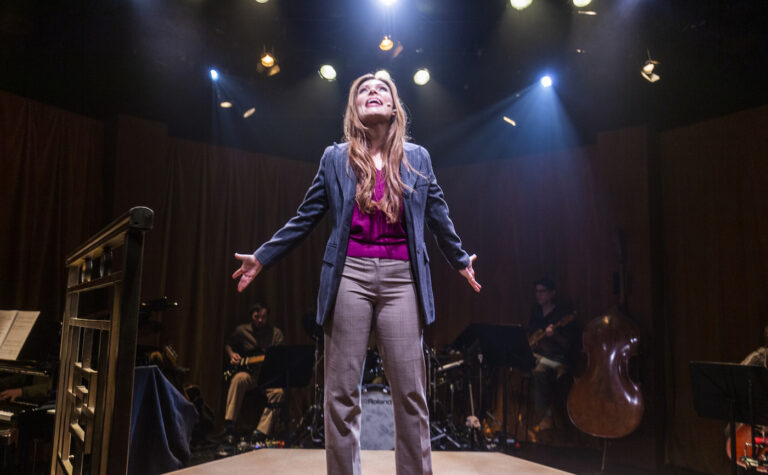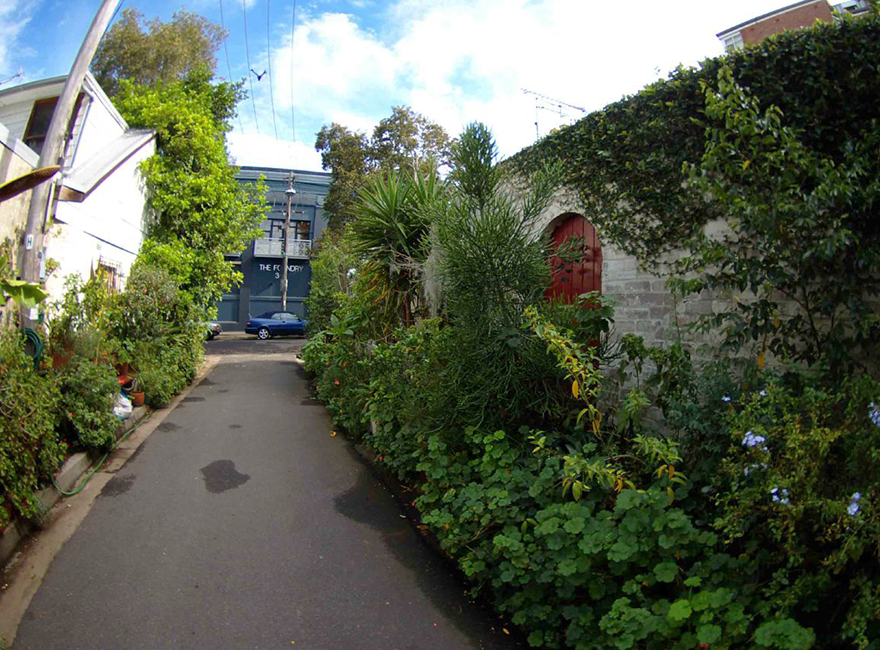
New study explores benefits of greening Sydney’s streets

By ALLISON HORE
A study released this week explored what the city might be like if Sydney’s lesser used streets were transformed into car-free market gardens.
The study by ERA-co was commissioned by Woods Bagot, the group behind the transformation of Central Station. By examining a sample of 11 local government areas in inner-Sydney, Streets Ahead: A New State of Wellness estimates that closing quiet streets within 800m of public transport connections could take up to 100,000 cars off the road and result in $1.3 billion in yearly household savings.
While major road thoroughfares could remain open, smaller backstreets would be de-surfaced, pedestrianised and made green.
Head of impact valuation at ERA-co, Meg Bartholomew, said the ongoing pandemic has highlighted the need for more “vibrant” outdoor spaces including parks, playgrounds and market gardens.
“A surprising benefit of the Covid-19 lockdown is that urban streets got quieter and more pleasant. Cities around the world are now introducing measures to retain a more peaceful state,” said Ms Bartholomew.
“Our study shows what a strategy for Sydney could look like, at a micro and macro level.”
One of the NSW Premier’s Priorities is to increase the proportion of homes in urban areas within 10 minutes walk to a quality green-space by ten percent over the next 3 years. Premier Gladys Berejiklian says improving access to quality green space will increase the sense of community in urban areas and promote healthier lifestyles. To make this possible, the NSW government say they are working with local governments to identify areas in need of most improvement.
ERA-co’s strategy of turning lesser used roads into parks will bring 260 thousand more people within 300 meters of green space. The Committee for Sydney says the study is a welcome contribution to the policy debate and a “novel way” of delivering the “Greener Public Spaces” priority.
“Transforming quiet streets is a wonderful conversation we need to have in Sydney. Turning streets back to space for gardens and children playing would increase the liveability of our city,” Committee for Sydney’s director of policy Eamon Waterford said.
In addition, removing hard road surfaces would reduce the heat island effect, and allow for more trees to be planted. Hard surfaces such as concrete and asphalt absorb the sun’s heat and release it back into the surrounding areas. Trees, on the other hand, make the surrounding areas cooler.
Guerilla gardening
Around the city activist groups have been reclaiming streets and nature strips to establish community gardens for decades. The practice, guerilla gardening, has become so common that some local councils even have policies in place which allow for it. Its 2030 vision for sustainability, the City of Sydney actively encourages residents and businesses to transform nature strips.
What began as a move by activists as a way of reclaiming unused urban space has become “a structured and legitimate activity”, says UNSW Built Environment Professor Linda Corkery.
“It’s come to be seen as a valuable thing, because suddenly these vacant spaces are being turned into verdant, productive gardens for the community,” she said.
“They are such a great use of unused space, generally tucked away, or on small pockets of land, that is very usable, but that not much can fit on.”
The city, as envisioned in ERA-co’s report, would take this philosophy of reclaiming median strips to the next level. Woods Bagot director Sarah Kay hopes the study will inspire planners and policy makers.
“These are big numbers, the types of figures that we don’t typically see. The Streets Ahead report shows how it’s possible to back up bold and progressive propositions with hefty evidence,” Ms. Kay said.









